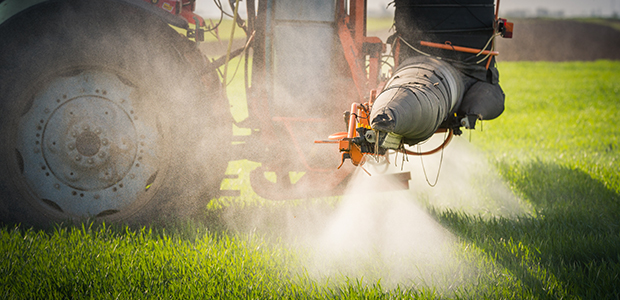
Study Shows High Pesticide Exposure Linked to Poor Sense of Smell Among Farmers
At the start of the study, about 16 percent of participants reported having experienced a high pesticide exposure event (HPEE), such as a large amount of pesticide spilling on their body. They were asked 20 years later if they suffered olfactory impairment, a partial to complete loss of sense of smell.
A study by Michigan State University has shown an association between unusually high pesticide exposure and poor sense of smell among older farmers. MSU researchers collaborated with researchers from the National Institute of Environmental Health Sciences and National Cancer Institute on the study, "High Pesticide Exposure Events and Olfactory Impairment among U.S. Farmers," which was published in the journal Environmental Health Perspectives.
In the study, researchers examined more than 11,200 farmers over a period of 20 years. At the start of the study, about 16 percent of participants reported having experienced a high pesticide exposure event (HPEE), such as a large amount of pesticide spilling on their body. They were asked 20 years later if they suffered olfactory impairment, a partial to complete loss of sense of smell.
At the end of the study, farmers who reported an HPEE were 50 percent more likely to report a poor sense of smell.
The research also showed that immediately washing with soap and water might mitigate risk. Compared to farmers who had never experienced an HPEE, those who did and washed within three hours had about a 40 percent higher risk of having problems with their sense of smell. The risk potentially doubled for those who waited four or more hours.
"Studying farmers gives us more reliable data on pesticide exposures than if we had studied the general population," said Honglei Chen, lead author and professor of epidemiology. "Because they use pesticides more and it's part of their job, they're more likely to remember what pesticides they used and in cases of high exposures, report the specific events."
During the study, Chen was able to identify two insecticides—DDT and lindane—as well as four weed killers—alachlor, metolachlor, 2, 4-D, and pendimethalin—that showed a greater association with poor sense of smell.
"Farmers reporting incidents, involving unusually high exposures to certain organochlorine insecticides such as DDT and herbicides including 2,4-D, were more likely to have a poor sense of smell," Chen said. "More research needs to be done, but some studies have linked these chemicals to Parkinson's and possibly dementia, too."
Poor sense of smell has been shown to be an early symptom of Parkinson's and dementia, but Chen said his study only addresses a link between pesticide exposure and impaired smell, not to neurodegenerative diseases.
"Olfactory impairment affects up to 25 percent of our older population, and our understanding of what the consequences are is still very limited," Chen said. "Studies have also suggested that older adults with a poor sense of smell are more likely to die earlier, so understanding the factors involved is very important."